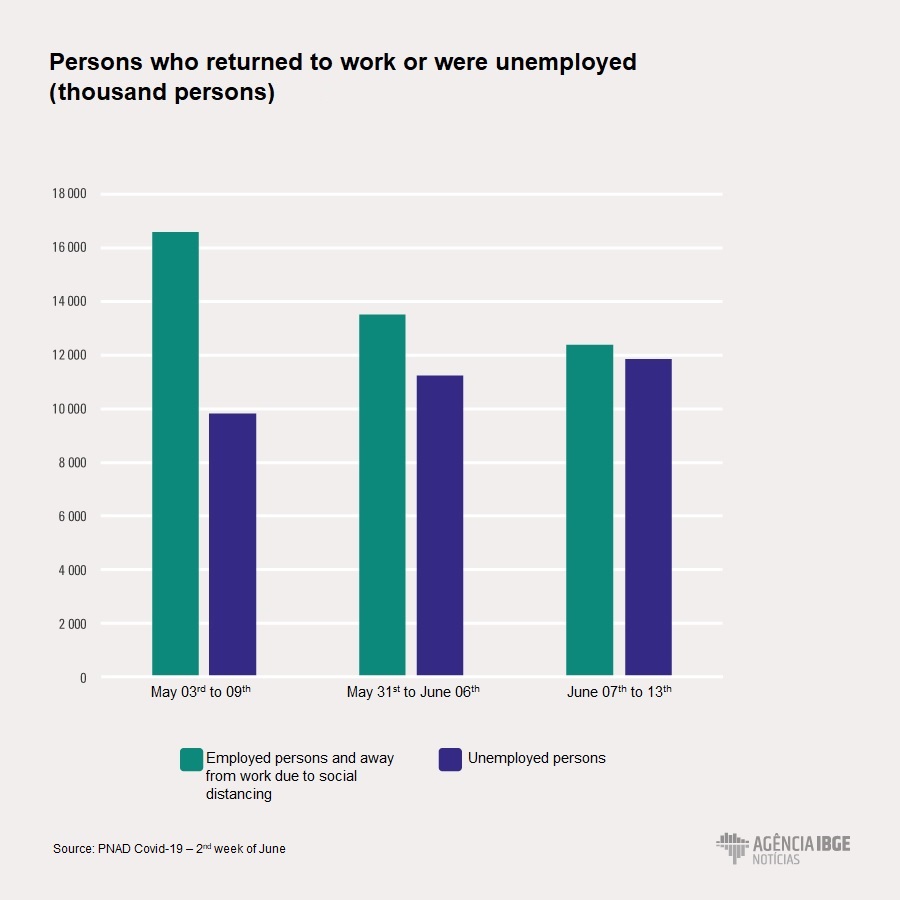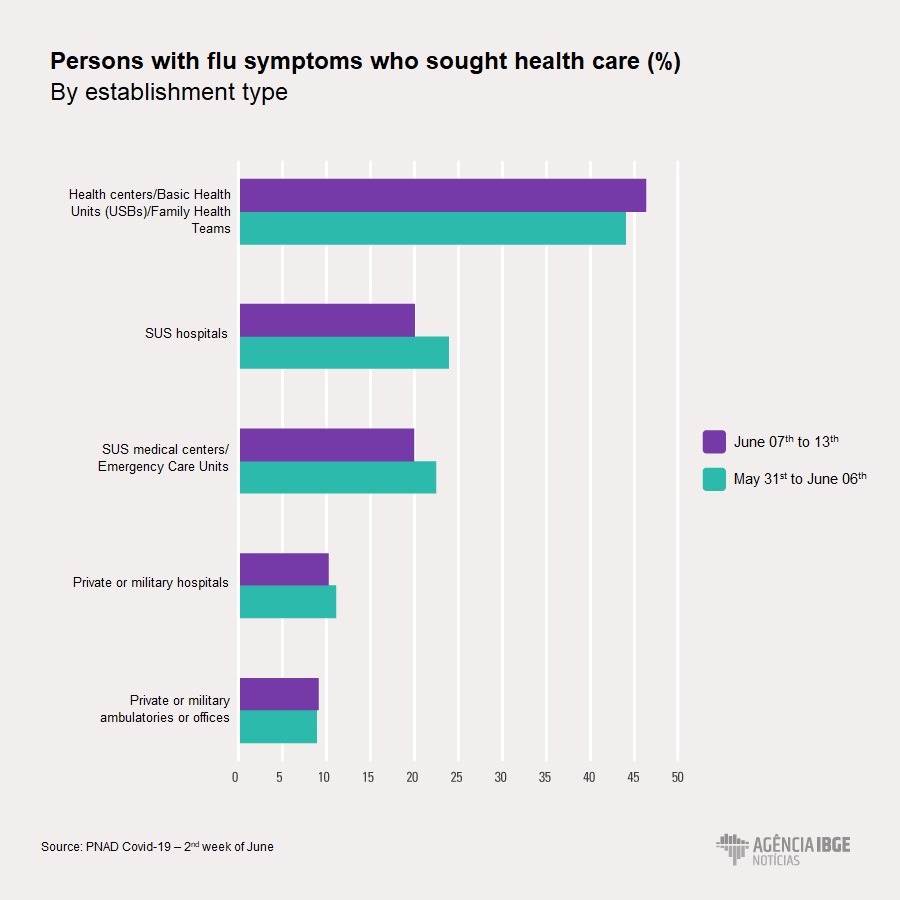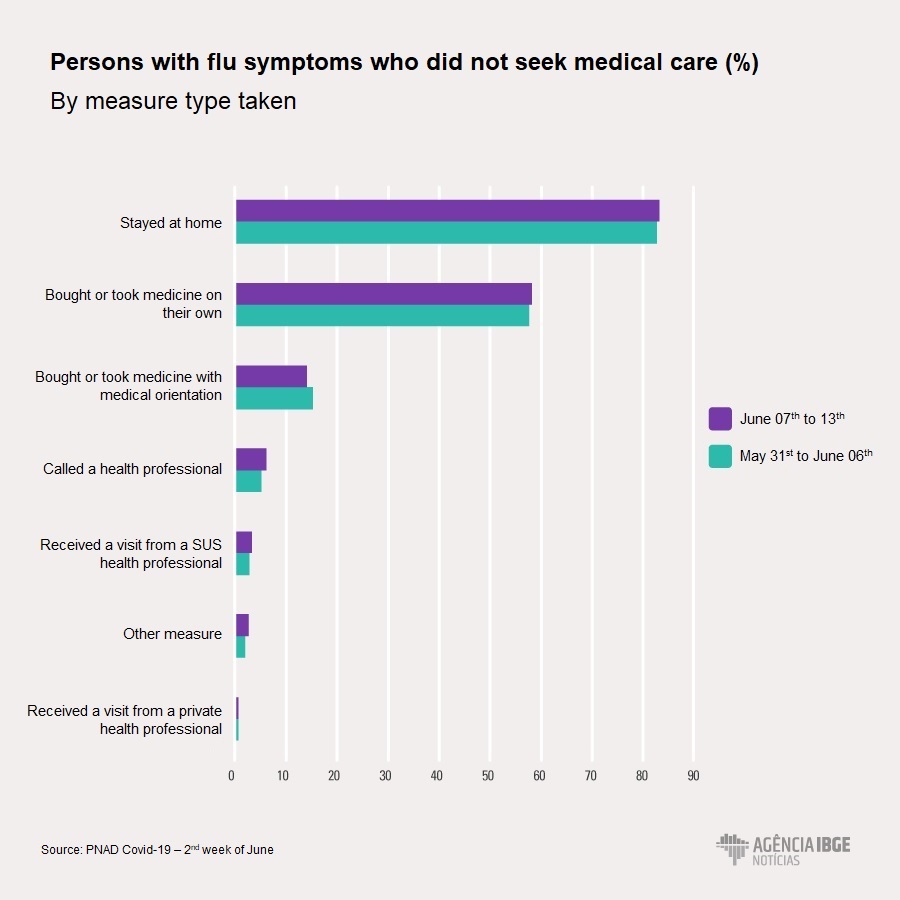PNAD COVID19
More than one million persons could have returned to work in the 2nd week of June
July 03, 2020 02h00 PM | Last Updated: July 07, 2020 03h13 PM

The number of employed persons who were temporarily away from work due to social distancing fell from 13.5 million in the first week of June to 12.4 million in the second week of that month. As the unemployed population remained statistically stable in this period, nearly 1.1 million persons could have returned to work with the relaxation of social distancing adopted in some cities of Brazil. In the first week of May, 16.6 million were away from work.
These data are from the weekly PNAD COVID19, released today (3) by the IBGE.
"In relation to the first week of May, the result may mean some return to work, but also layoffs, as the unemployed population increased by two million in this comparison. So, the two effects could have happened", explained Maria Lucia Vieira, coordinator of the survey, adding that 11.9 million persons were unemployed in the second week of June.

In the second week of June, the IBGE estimates that 170 million persons were at working age, though only 83.5 million were employed. This figure remained stable since the first week of May, and it shows that less than half (49.0%) of the persons were working in the second week of June.
Among those employed, 8.5 million worked remotely, which represents 12.5% of the workers not away from work due to the pandemic. This group, which swung along the last weeks, reaching 8.9 million in the first week of June, returned to the level of the beginning of May (8.5 million).
According to the survey, those unemployed who would like to work, but did not look for work either due to the pandemic or due to the lack of jobs in the locality where they live, stood at 18.2 million persons, pointing out to a stability in the comparison with the first week of June. This group corresponded to 68% of the unemployed persons who did not search for work and would like to work.
Informality hits 29.2 million persons
The informality rate stayed at 35.0% in the second week of June, hitting 29.2 million persons. The number of informal workers dropped in the third week of May (28.5 million), though it rose again in the last weeks. They were 29.6 million in the beginning of May.
Among the informal workers are those employed in the private sector without a formal contract; domestic workers without a formal contract; employed persons who do not contribute to social security; self-employed workers who do not contribute to social security; and unpaid workers helping a resident or relative.
Three million persons looked for medical care in the second week of June
PNAD COVID19 also shows that nearly three million persons with some symptom of flu syndrome looked for medical care in health units in the second week of June. This figure remained statistically stable compared with the previous week (2.8 million), though it is lower than that registered in the beginning of May (3.7 million), when the survey started.

In the second week of June, 15.6 million persons complained about any of the flu symptoms investigated by the survey (fever, cough, sore throat, difficulty to breathe, headache, chest pain, nausea, stuffy or runny nose, fatigue, eye pain, loss of smell or taste, and muscle pain). In the first week of May, 26.8 million were symptomatic.
The symptoms slightly changed in the second week of June, compared with the previous one. Most of the interviewees reported a headache (7.3 million). The second most recurrent complaint was stuffy or runny nose (5.5 million), followed by cough (4.7 million), muscle pain (4.3 million), sore throat (3.7 million), fatigue (2.5 million), loss of smell or taste (2.3 million) and difficulty to breathe (2.1 million).

"Of the three million who had some symptom and looked for medical care, more than 85% went to health units of the public network," notices Vieira.
Nearly half (46.4%) reported to look for treatment in health centers, 20% in medical centers and 20% in hospitals of the Unified Health System (SUS). In the private network, 9.1% went to ambulatories, private or military offices, 4.0% in private medical centers and 10.2% in private hospitals.
Of the 900 thousand who looked for care in hospitals, either public, private or military, in the second week of June, 110 thousand were hospitalized, eleven thousand less when compared with the first week of June.
Among the 15.6 million persons who had some symptom, 83.1% did not look for any care or health establishment in the second week of June. On the other hand, 58.1% took medicines on their own. Other 14.1% took medicines under medical orientation. In addition, 6.2% called a health professional and 3.3% were visited by a health professional from SUS.

Carried out with the support from the Ministry of Health, PNAD COVID19 is a version of the National Household Sample Survey (Continuous PNAD) aiming at pinpointing the impacts of the pandemic on the labor market and at counting persons with symptoms associated to the flu syndrome. The IBGE releases the survey on a weekly and monthly basis. The survey is considered one of the IBGE´s Experimental Statistics.



















